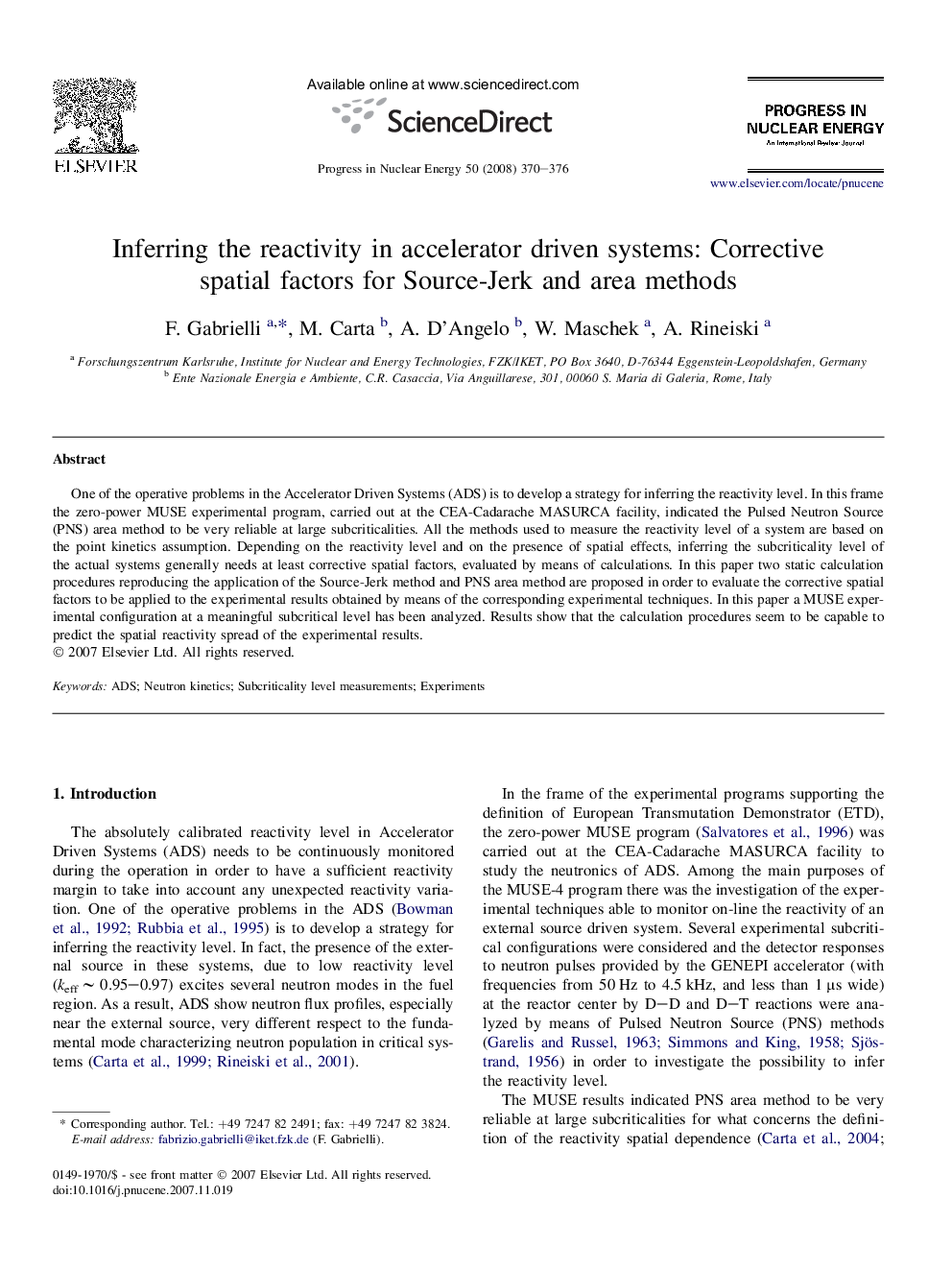| Article ID | Journal | Published Year | Pages | File Type |
|---|---|---|---|---|
| 1741670 | Progress in Nuclear Energy | 2008 | 7 Pages |
Abstract
One of the operative problems in the Accelerator Driven Systems (ADS) is to develop a strategy for inferring the reactivity level. In this frame the zero-power MUSE experimental program, carried out at the CEA-Cadarache MASURCA facility, indicated the Pulsed Neutron Source (PNS) area method to be very reliable at large subcriticalities. All the methods used to measure the reactivity level of a system are based on the point kinetics assumption. Depending on the reactivity level and on the presence of spatial effects, inferring the subcriticality level of the actual systems generally needs at least corrective spatial factors, evaluated by means of calculations. In this paper two static calculation procedures reproducing the application of the Source-Jerk method and PNS area method are proposed in order to evaluate the corrective spatial factors to be applied to the experimental results obtained by means of the corresponding experimental techniques. In this paper a MUSE experimental configuration at a meaningful subcritical level has been analyzed. Results show that the calculation procedures seem to be capable to predict the spatial reactivity spread of the experimental results.
Keywords
Related Topics
Physical Sciences and Engineering
Energy
Energy Engineering and Power Technology
Authors
F. Gabrielli, M. Carta, A. D'Angelo, W. Maschek, A. Rineiski,
